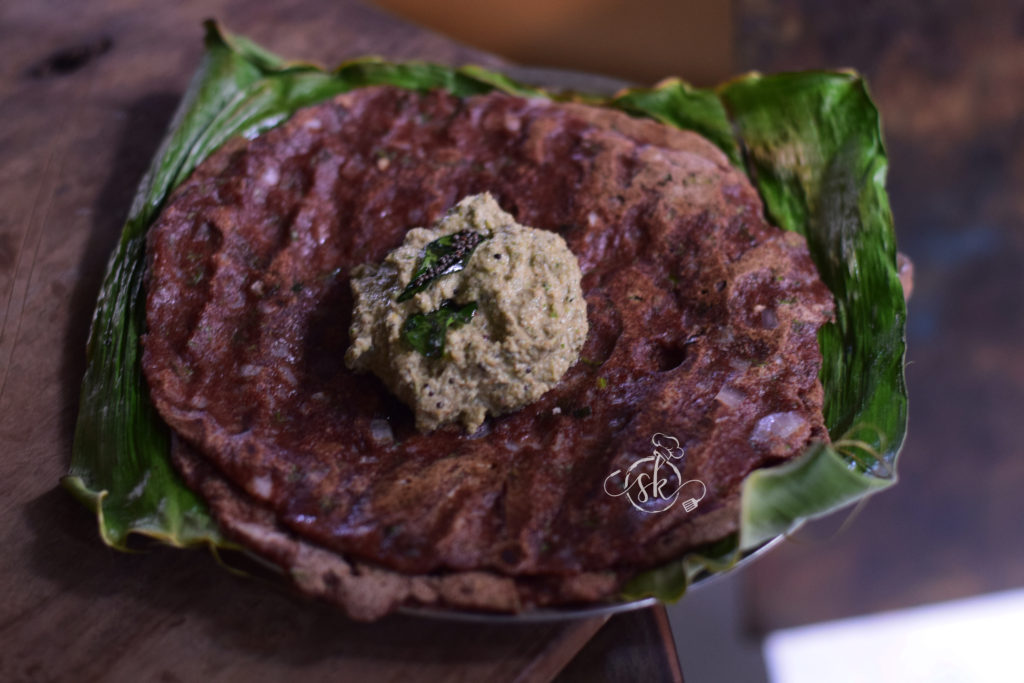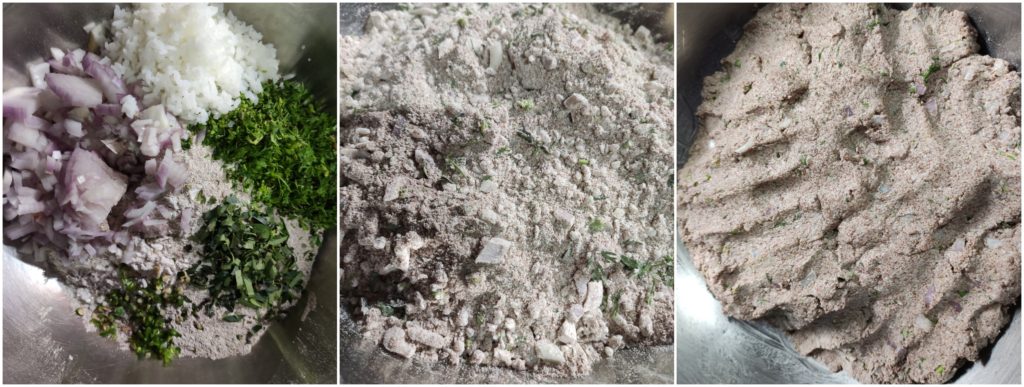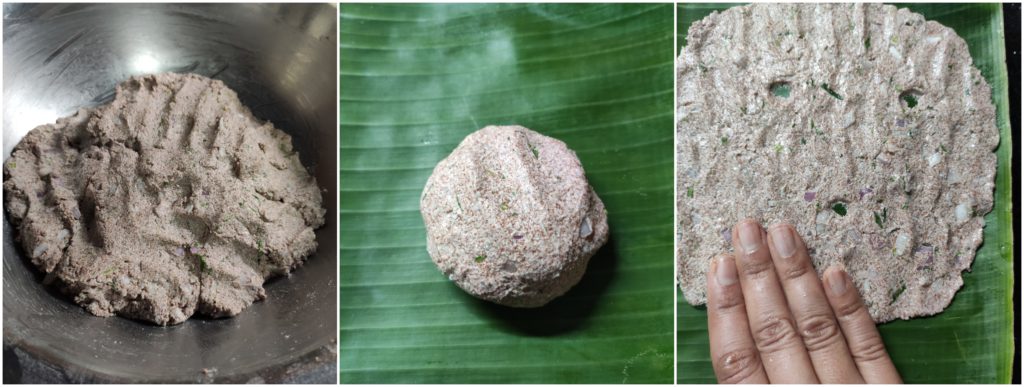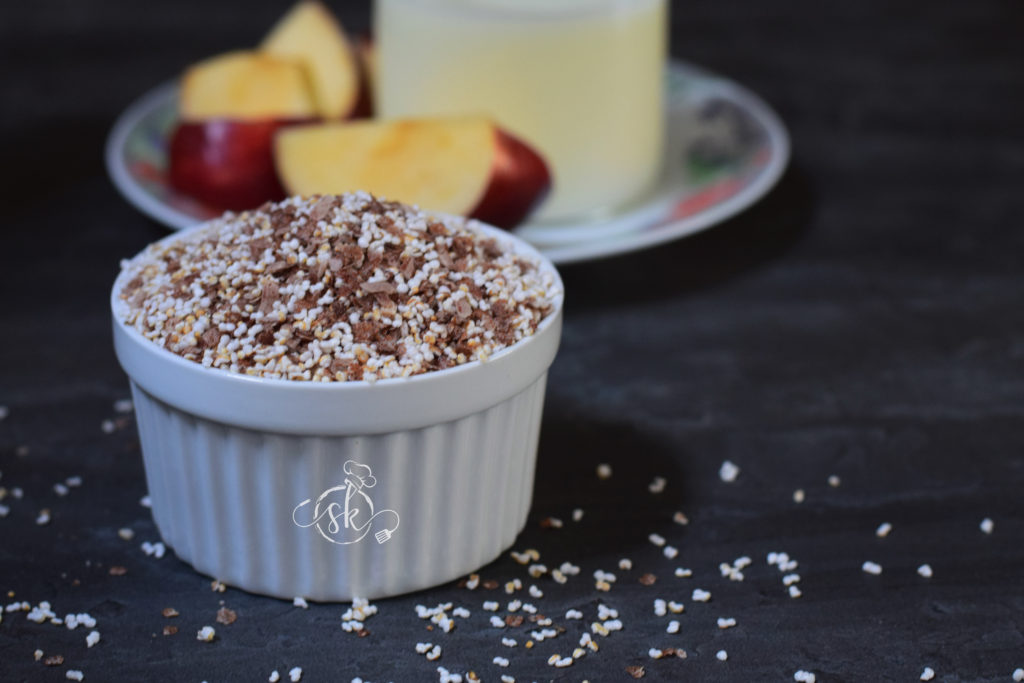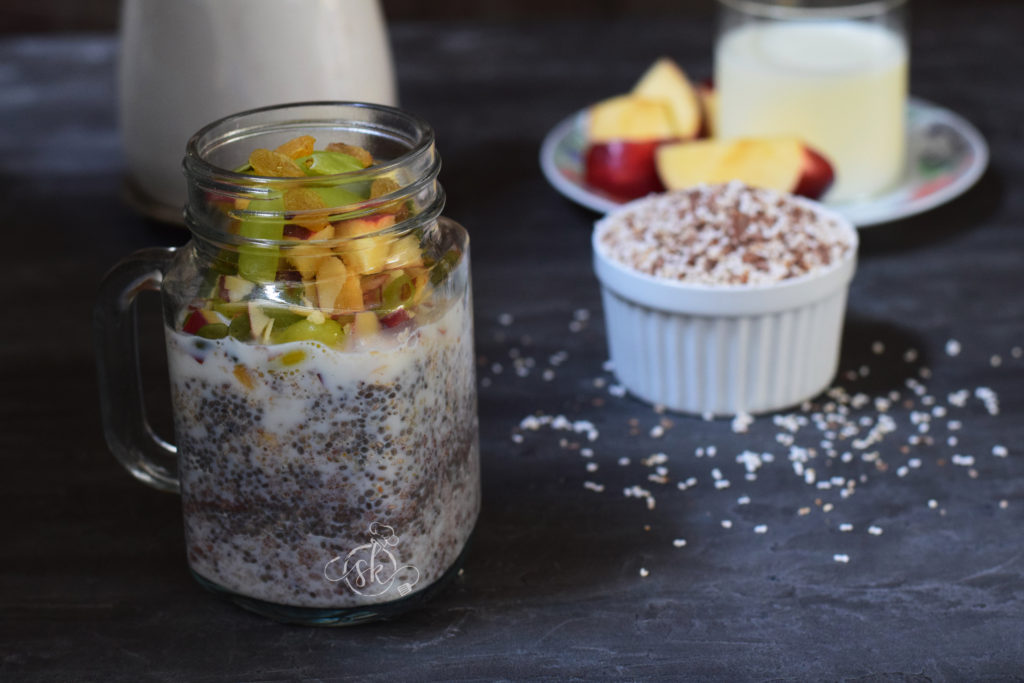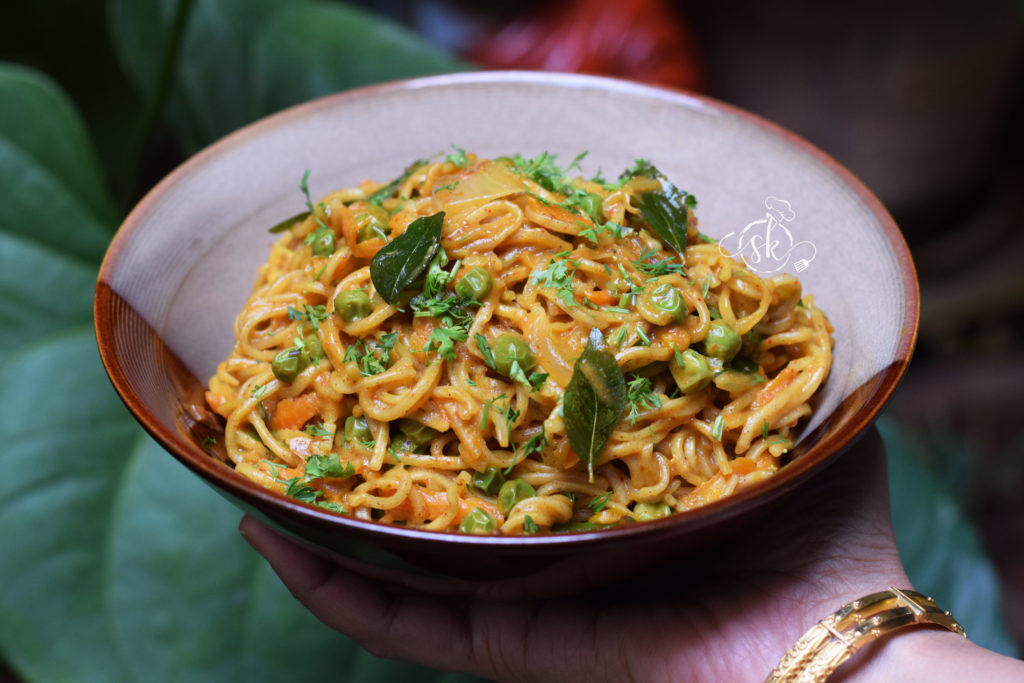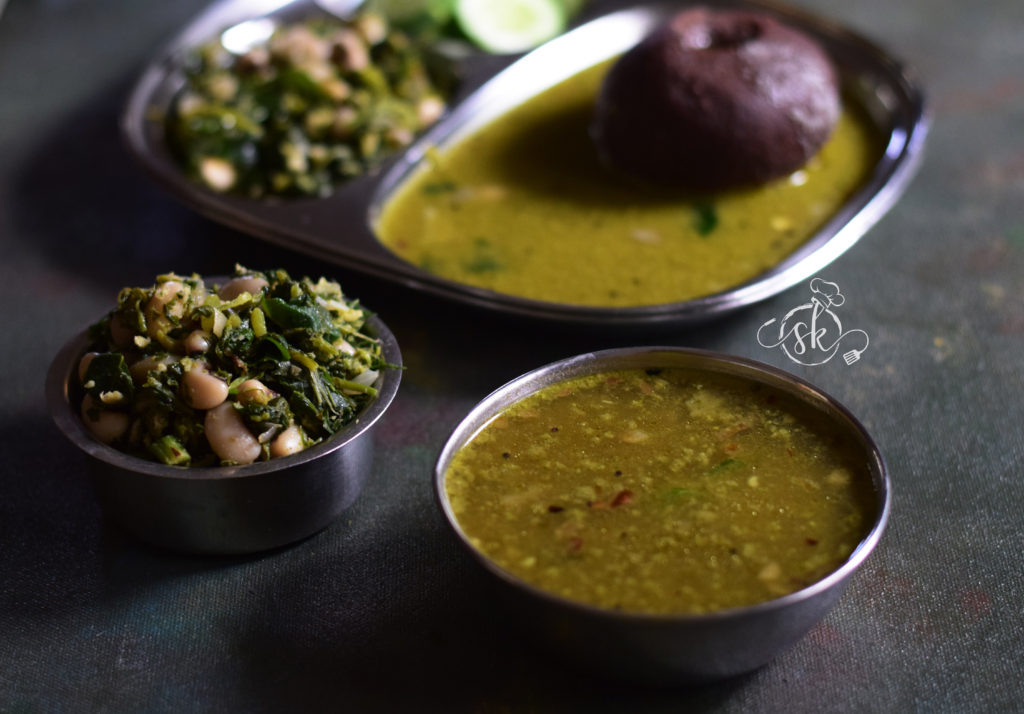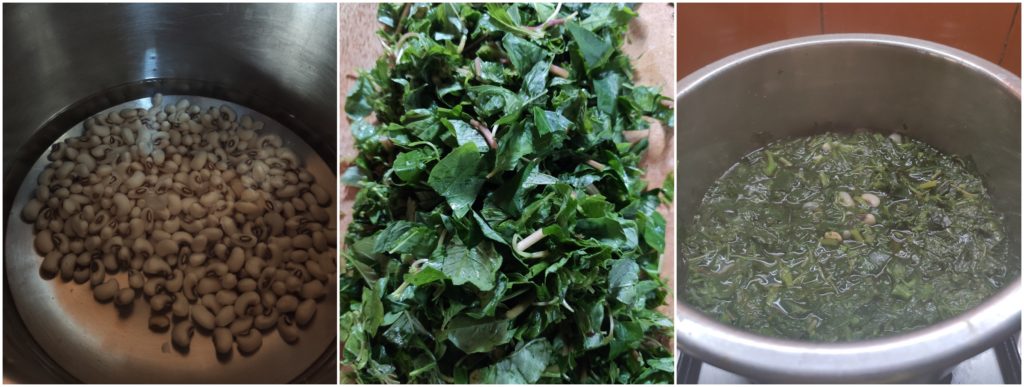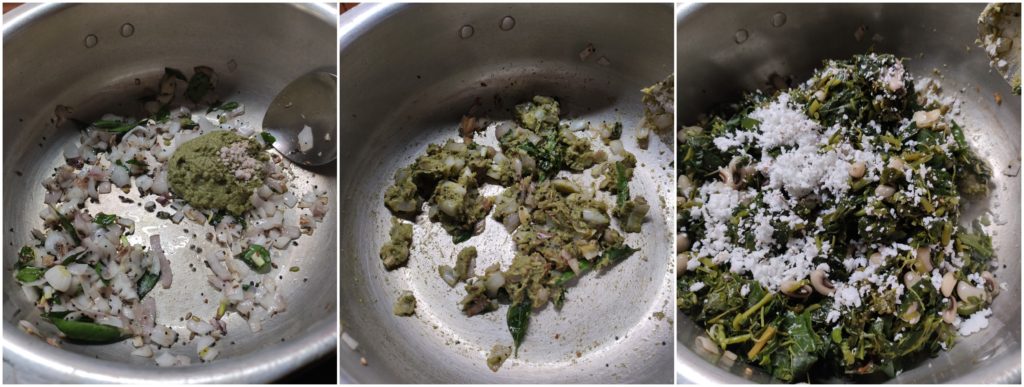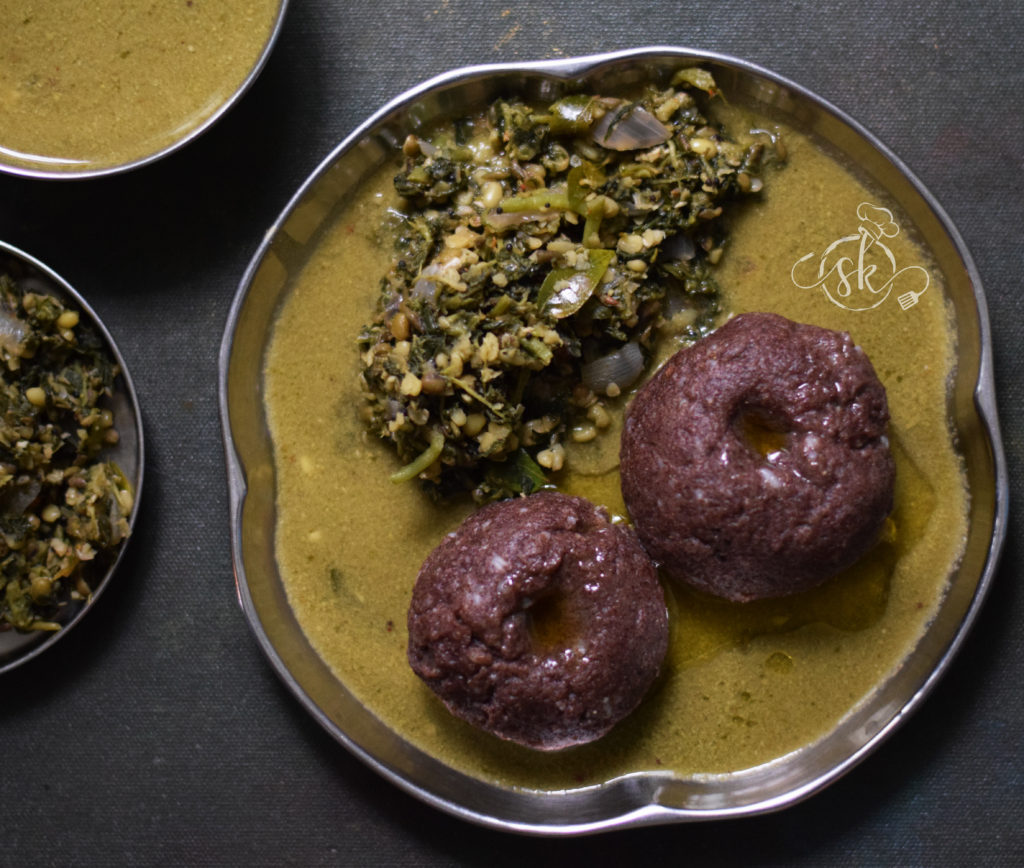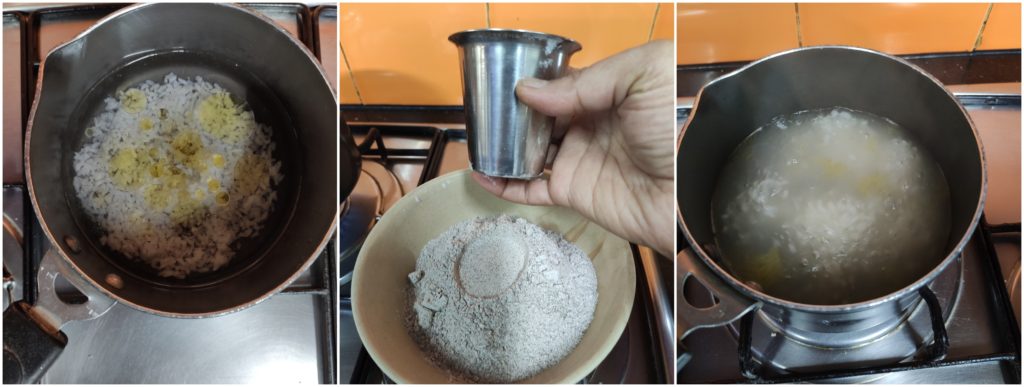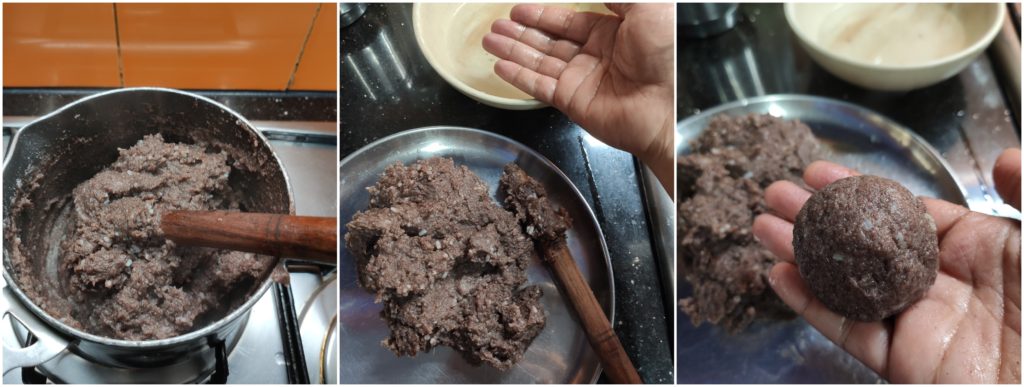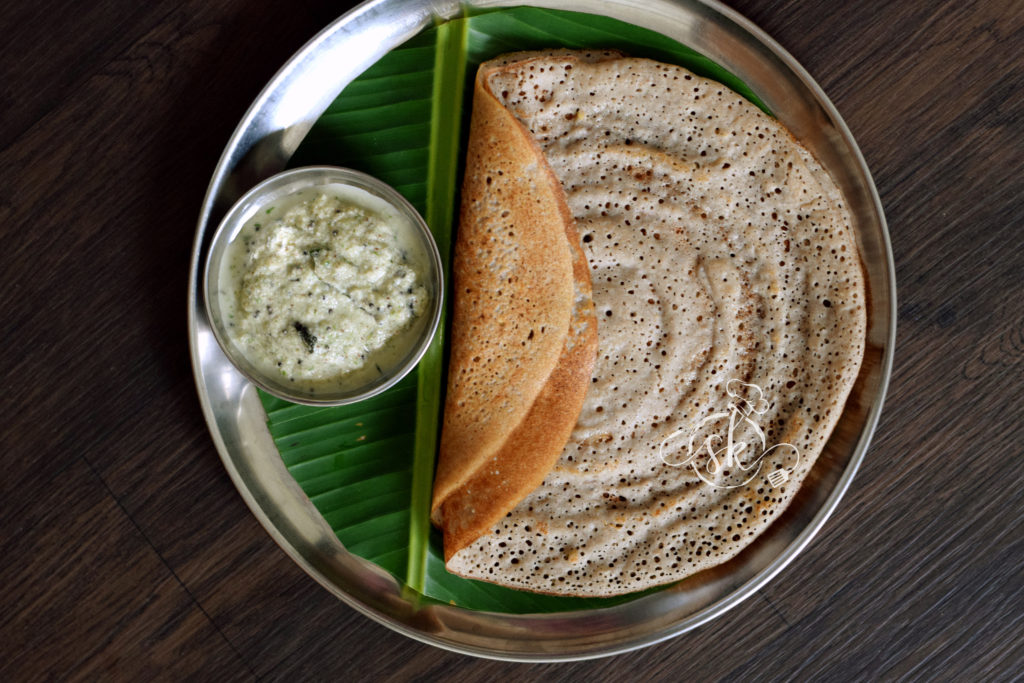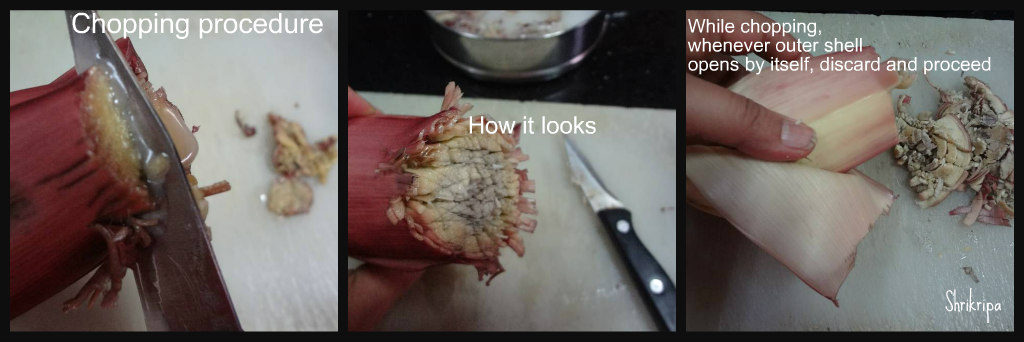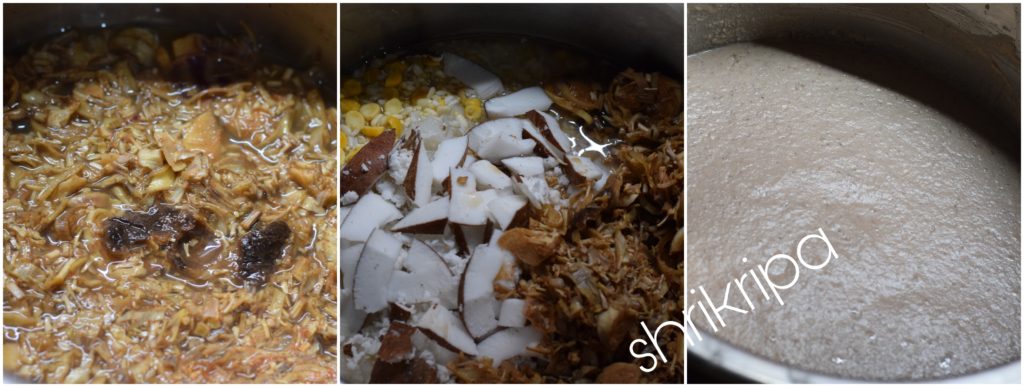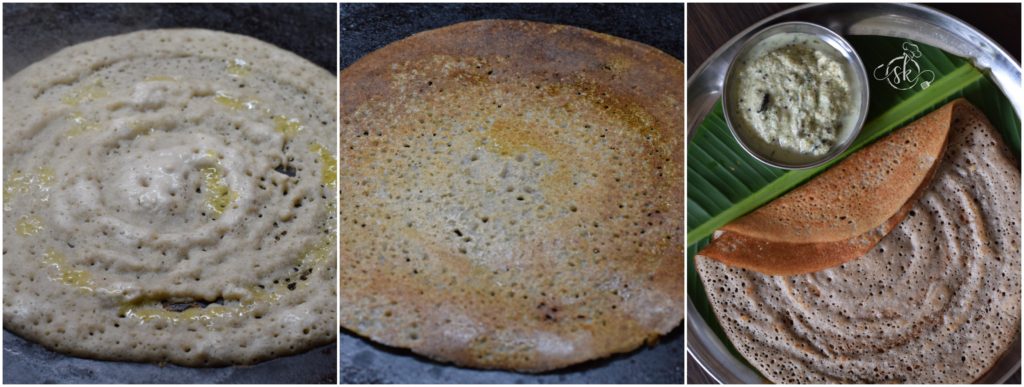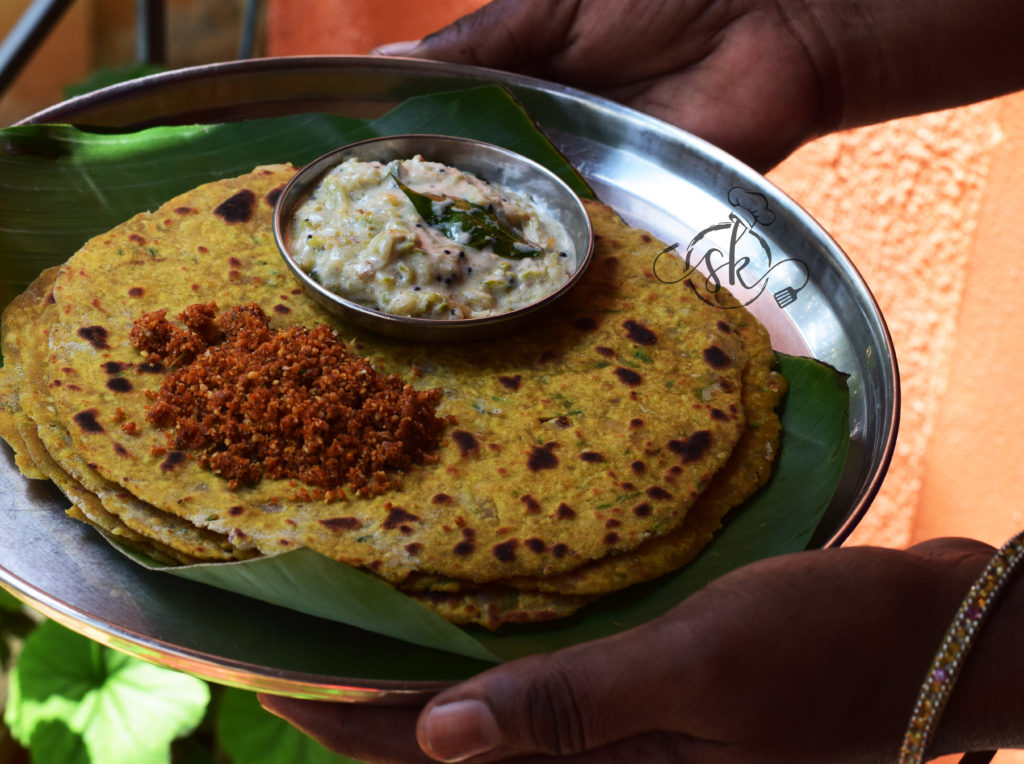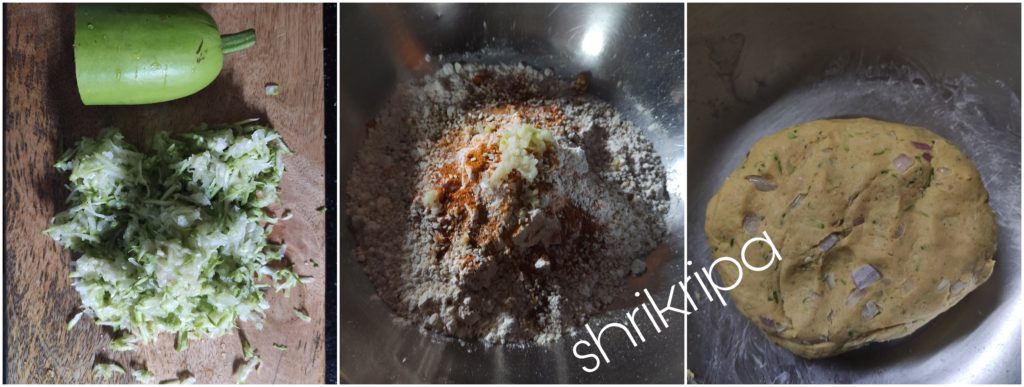Foxtail Millet Kheer is a delicious addition to the festive menu, including the fasting menu, to the traditional kheer we usually make with rice. This millet, also known as Navane in Kannada & is rich in protein, minerals & dietary fibre.
I have mixed nutty-flavoured Foxtail millet and a little moong dal to enhance the rustic taste.
Soaking millet makes it easier to digest and allows your body to absorb more nutrients. I usually do it overnight.

Foxtail Millet – ½ Cup
Moong dal – 2 Tblsp
Water (to cook Thinai) – 2 ½ Cups
Jaggery – ¾ Cup to 1 cup
Cardamom powder ½ tsp
Coconut milk – 1 Cup (you can add whole milk as well)
Ghee – 2 tsp
Cashew – 10 nos
Method:
-Soak millet for overnight. Morning, drain the water and leave the millet to air dry on a colander.
-wash moong dal and drain that as well.
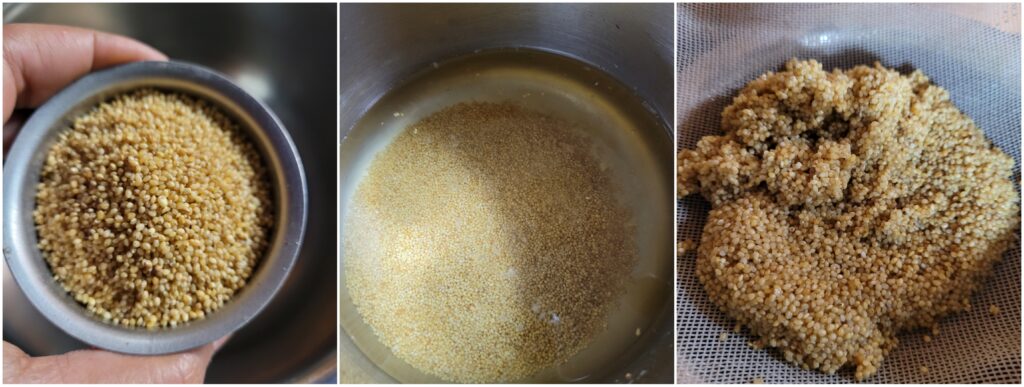
-Make jaggery syrup by – Add Jaggery and water in a pan and heat it till the Jaggery melts completely. Use a filter to remove the impurities and extract Jaggery syrup. Keep aside
-Now, take a thick-bottomed vessel or kadai, heat ghee, fry cashew bits, and remove it; keep aside.

-Add moong dal and fry it until light brown; add foxtail millet and fry for 2 minutes.
-Add hot water or 3rd extract of coconut milk or whole milk. Cook until millet and dal turn soft and mushy. (it should hold the texture but turns mushy between your thumb and forefinger while pressing it.)
-If you are using clean Jaggery, here I have used Nolen gur (date palm jaggery); add directly and boil until the raw smell of Jaggery vanishes.
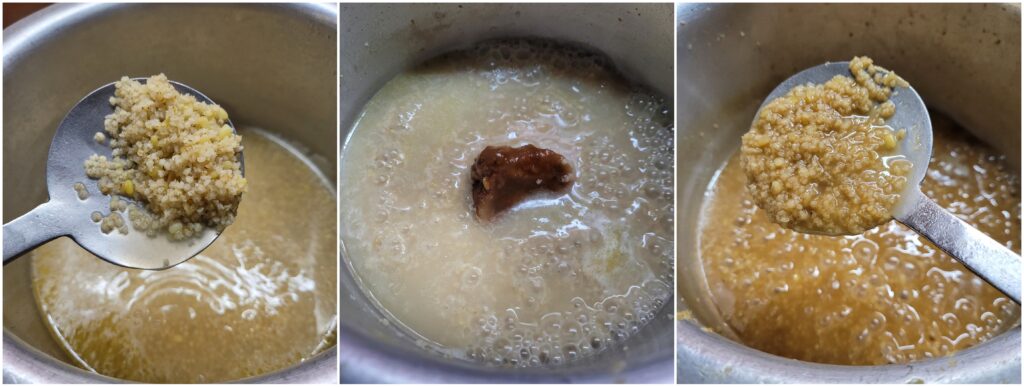
-Add thick coconut milk cardamom powder and allow to boil once. Switch off the stove. Garnish with fried cashews and serve.

